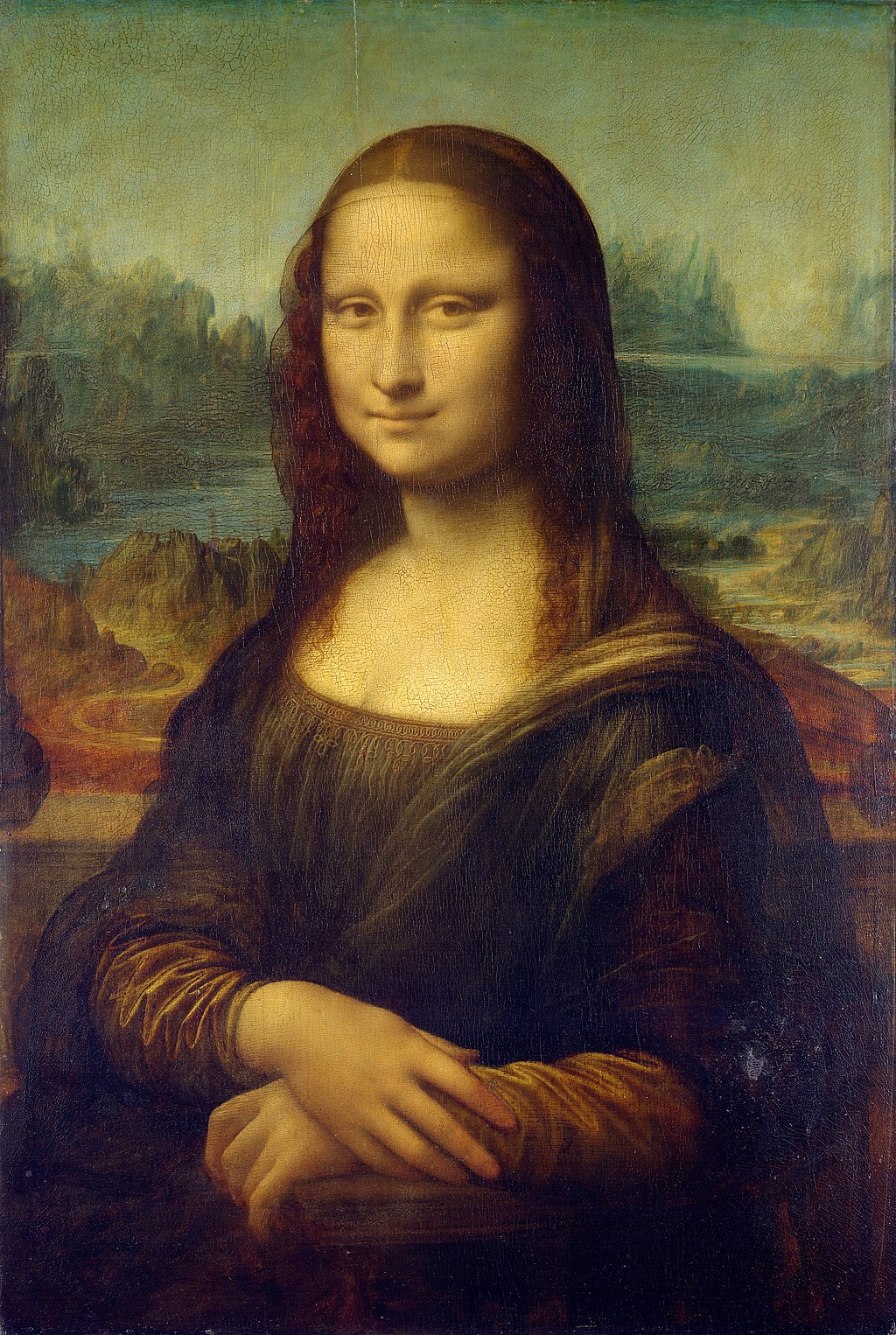Let’s look at a painting:

Surely you’re familiar with this one. It’s very famous! By the time I was a university student, I’d seen reproductions of this painting many hundreds (if not thousands) of times in a great variety of contexts: history books, art books, magazines, print ads, TV commercials, etc. In my last year of university, I visited The Louvre, where the “original” is on display. It was on a wall, behind thick glass.
My first thought upon seeing the “real” Mona Lisa was that it’s smaller than I expected, perhaps because I was very far away. There was a large crowd surrounding the painting. Immediately in front of me was a man with a child on his shoulders; he’d propped him up so he could see. “Son,” he said, “there it is! The most famous painting in the world!”
The most famous painting in the world. Not just a beautiful portrait of a particular individual, an excellent example of Renaissance painting or of the sfumato oil painting technique: This painting represents something else, something broader. It’s the uber-painting, the one that represents all other paintings. If you were to stop a random person on the street and ask them to name a painting, the odds are high this is the one they’ll mention.
Mona Lisa’s fame has resulted in (and been the result of) endless reproduction and re-contextualization. What was once a stand-in for a real person is now used to convey lots of other meanings: Renaissance, painting, art, genius, and so much more. With each new reproduction, each new act of association between the painting and an idea, a little bit of its original meaning erodes.
Painting, art, and genius are abstractions; they need signifiers to help us discuss them in concrete ways. Mona Lisa fills this need beautifully. We latch on to the new signification and repeat it. In so doing, the painting’s original meaning wanes. As familiar as you are with the image itself, I’m willing to bet you’re not as familiar with the name Lisa Gherardini, the ostensible subject of the painting. (This post, too, layers new meaning onto the Mona Lisa, nudging it ever slightly further from its original role and meaning; the irony isn’t lost on me.)
Of course, this doesn’t just happen with paintings; all signifiers can be subject to this sort of meaning shift. For most of our history, it’s happened relatively slowly: Mona Lisa’s meaning changed over a long period of time. However, in digital information environments — and social media, in particular — this process can happen much faster.
Consider the appearance of the word “BREAKING” at the beginning of a news item. I still remember a time in my life when seeing this word in this context would cause my heart to skip a beat. “Oh no!,” I’d wonder, “What terrible thing has happened now?” “BREAKING” used to mean something like, “an event has occurred that is important enough for us to immediately ask for your attention.” It’s useful to have a signifier that serves this purpose; sometimes we need to stop what we’re doing to pay attention. (“BREAKING: 100-foot waves spotted heading towards San Francisco as a result of a tsunami. Evacuate now!”) “BREAKING” is thus a sort of incantation that makes us prop up.
Or rather, it used to be. You see, this usage doesn’t come for free: it only works as intended if we use it infrequently and for really important things. When we overuse the word, its meaning starts to erode — and once gone, we’ve lost it. At some point, somebody recognized the power of “BREAKING” to get us to pay attention and used it for something slightly less than truly urgent or relevant. Other people picked up on the usage, and from then on it was a slippery slope to irrelevance:
#Breaking - About 100 goats are on the loose right now in a #Boise neighborhood. They are going house to house eating everything in sight. Nobody has a clue where they came from...updates to follow pic.twitter.com/K0ghUwQEfk
— Joe Parris (@KTVBJoe) August 3, 2018
The original meaning of the Mona Lisa has mostly eroded. But that’s OK; Lisa Gherardini and the people who loved her (and would’ve cared about the verisimilitude of her representation) are long gone. The painting is now serving a new role. This shift in meaning is useful to us, even if we can no longer appreciate the painting as such and only do so as an abstract concept. However, in diminishing the potency of “BREAKING” through repetition and re-contextualization, we’ve done ourselves a disservice: we’ve lost a powerful signifier that used to play a useful (and necessary) role.
Those of us who structure information environments are continually repeating and re-contextualizing signifiers, often for novel purposes. We must approach the task with great respect to the power of language, being mindful not to trivialize the words, phrases, and symbols we use. It’s frighteningly easy to drain signifiers of their meaning, and once that’s happened, their potency (and effectiveness) cannot be regained; the life is sucked out of them.
Note: I first learned about the erosion of meaning through reproduction—using Mona Lisa as an example—from one of my university professors. I wish I could remember her name so I could give her credit for it.